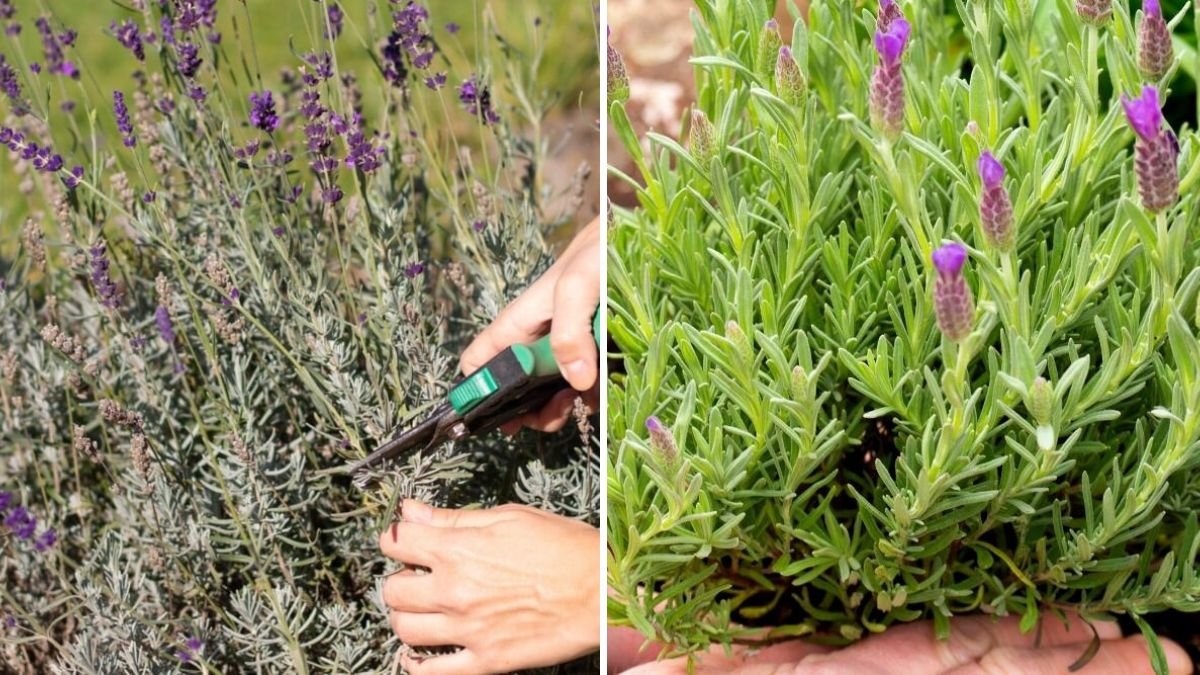Lavender is one of the most cherished herbs in gardens worldwide. Its aromatic foliage, vibrant purple blooms, and ability to attract pollinators make it a favorite among gardeners, chefs, and herbal enthusiasts alike. However, despite its popularity, many gardeners struggle to grow healthy, thriving lavender plants. Mistakes in planting, watering, pruning, and soil care can lead to weak growth, reduced flowering, or even plant death. Understanding these common errors and how to correct them is crucial for cultivating vibrant, long-lasting lavender. This article explores the biggest mistakes gardeners make with lavender and offers expert strategies to fix them.
Mistake 1: Planting Lavender in Poorly Draining Soil
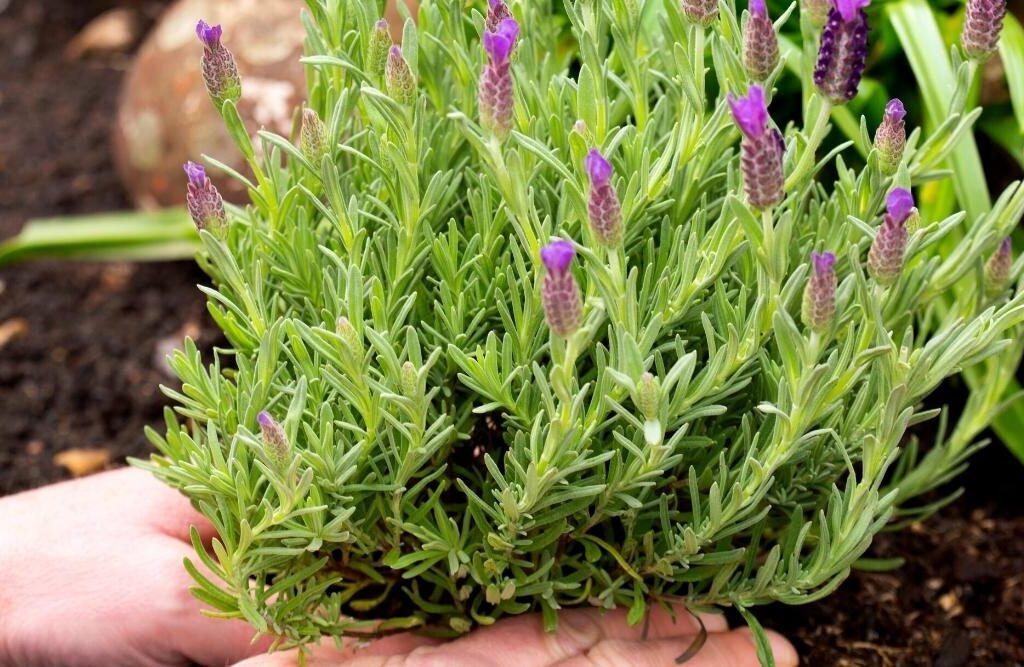
Lavender originates from Mediterranean regions, where soil is well-draining, sandy, and slightly alkaline. One of the most common mistakes is planting lavender in heavy, clay-rich, or waterlogged soil.
Symptoms:
- Yellowing leaves and stunted growth.
- Root rot and sudden plant collapse.
- Fungal infections on stems and leaves.
How to Fix It:
- Amend Soil: Incorporate sand, gravel, or perlite into garden soil to improve drainage.
- Raised Beds: Plant lavender in raised beds to allow excess water to drain away.
- Container Gardening: Use large pots with well-draining potting mix for lavender in areas with poor soil.
Proper soil ensures roots stay healthy and prevents moisture-related diseases.
Mistake 2: Overwatering Lavender
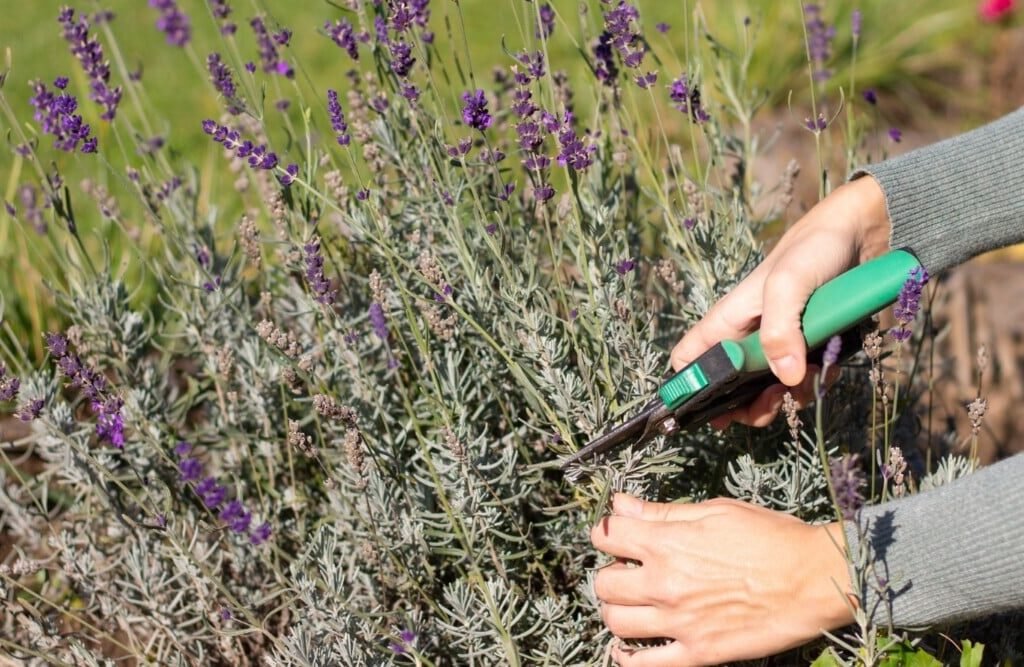
Lavender is drought-tolerant and thrives in dry conditions. Overwatering is a frequent error, particularly in regions with high rainfall or during the plant’s establishment phase.
Symptoms:
- Wilting despite moist soil.
- Soft, brown stems near the base.
- Mold or mildew developing on foliage.
How to Fix It:
- Water Sparingly: Water only when the soil is dry to the touch.
- Deep Rooting: Encourage deep root growth by watering less frequently but thoroughly when necessary.
- Mulching with Care: Use light, inorganic mulch like gravel to retain some moisture without keeping the soil wet.
By adjusting watering practices, gardeners can prevent root rot and support strong, healthy plants.
Mistake 3: Planting Lavender in Full Shade
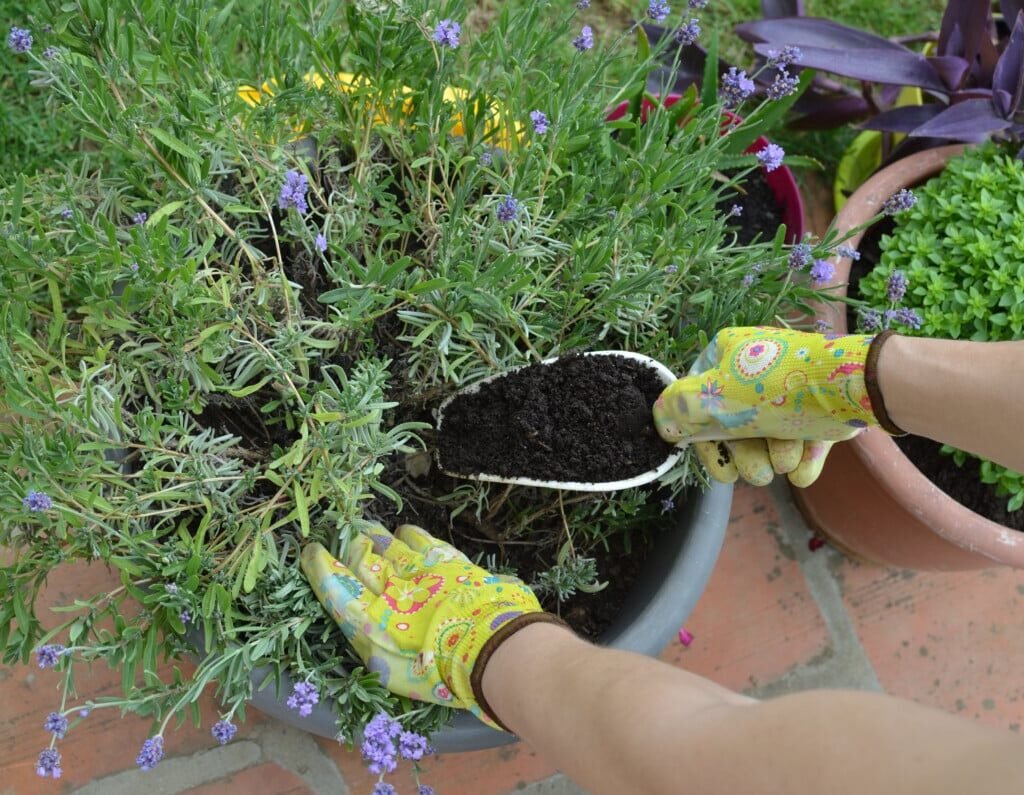
Lavender requires full sunlight to thrive. Planting it in shaded areas is a common mistake that significantly reduces flower production and plant vigor.
Symptoms:
- Weak, leggy growth.
- Sparse or non-existent blooms.
- Leaves pale or losing fragrance.
How to Fix It:
- Full Sun Exposure: Plant lavender where it receives at least 6–8 hours of direct sunlight daily.
- Prune Surrounding Plants: Remove overhanging branches or shrubs that block light.
- Container Placement: For potted lavender, relocate pots to sunny patios or balconies.
Sunlight fuels photosynthesis, ensuring robust growth and abundant, aromatic blooms.
Mistake 4: Incorrect Pruning Practices
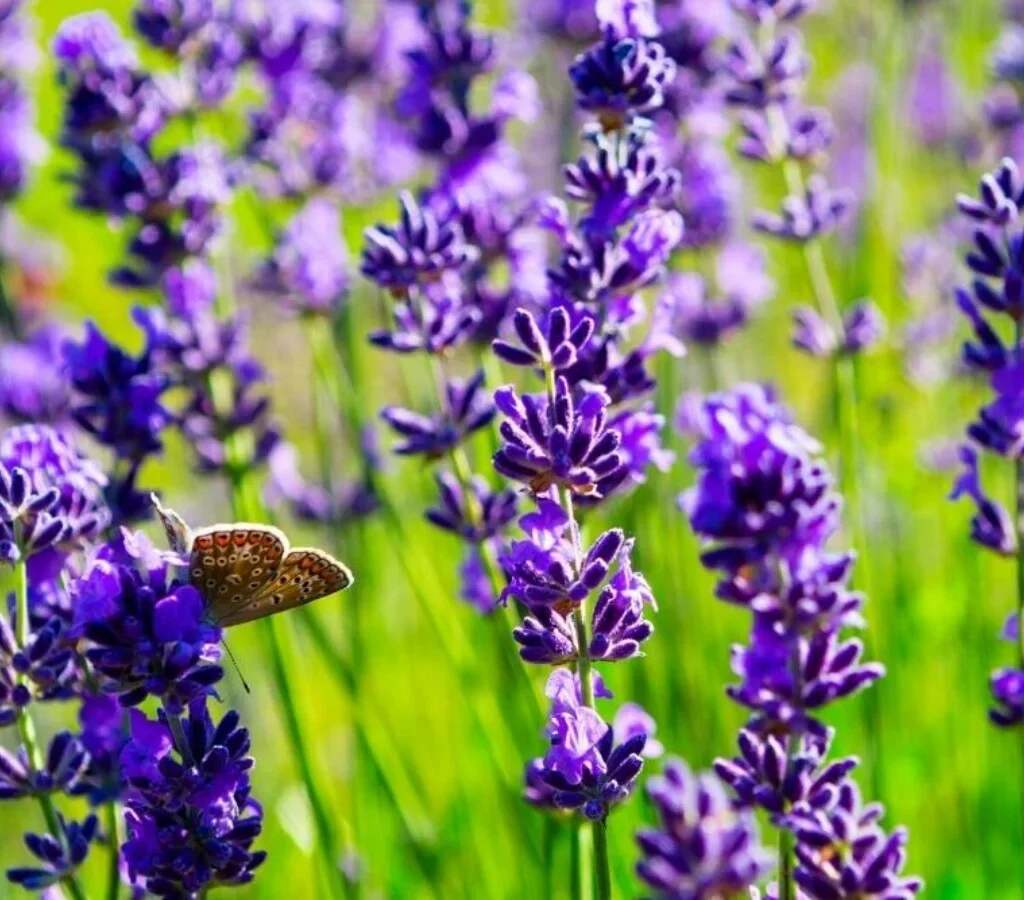
Pruning is essential for maintaining lavender’s shape, health, and bloom productivity. Many gardeners either prune too aggressively, prune at the wrong time, or neglect pruning altogether.
Symptoms:
- Bare, woody stems with sparse foliage.
- Reduced flowering the following season.
- Plants losing their compact, attractive shape.
How to Fix It:
- Prune Annually: Trim lavender after flowering, typically in late summer or early fall.
- Avoid Cutting into Old Wood: Lavender does not regenerate well from old, woody stems. Prune just above green growth.
- Shape the Plant: Lightly trim sides to maintain a neat, compact form while encouraging bushy growth.
Proper pruning promotes airflow, prevents disease, and ensures vigorous blooms year after year.
Mistake 5: Ignoring Soil pH
Lavender prefers slightly alkaline to neutral soil (pH 6.5–7.5). Planting in acidic soil can limit nutrient availability and inhibit growth.
Symptoms:
- Stunted growth and yellowing leaves.
- Reduced flowering.
- Susceptibility to disease and pests.
How to Fix It:
- Test Soil: Use a soil pH kit to determine acidity or alkalinity.
- Adjust pH: Add lime to acidic soil to increase alkalinity or incorporate composted organic matter to balance the soil.
- Fertilization: Use a low-nitrogen fertilizer to avoid excessive leafy growth at the expense of flowers.
Correct soil pH ensures lavender absorbs nutrients effectively, supporting strong, healthy plants.
Mistake 6: Crowding Plants
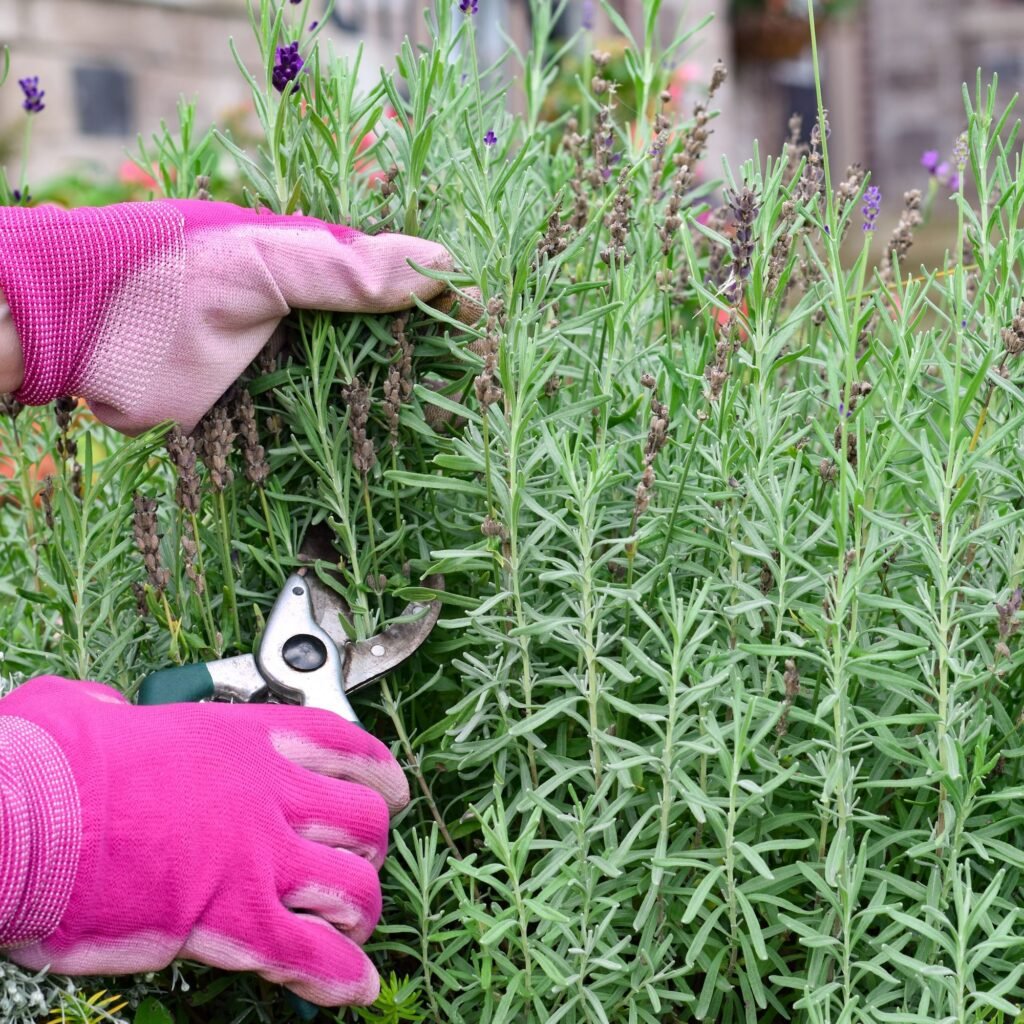
Lavender requires space for airflow and growth. Overcrowding leads to poor air circulation, increasing the risk of fungal infections and stunted growth.
Symptoms:
- Mold or mildew on leaves.
- Slow growth and smaller flowers.
- Plants competing for water and nutrients.
How to Fix It:
- Proper Spacing: Plant lavender at least 18–24 inches apart, depending on the variety.
- Airflow Consideration: Avoid planting near dense shrubs or in tight corners.
- Prune Regularly: Maintain shape and remove crowded or weak stems to improve ventilation.
Adequate spacing reduces disease risk and ensures each plant receives enough light and nutrients.
Mistake 7: Neglecting Winter Protection
While lavender is hardy, young plants or certain varieties may struggle during harsh winters. Neglecting winter care can lead to frost damage or plant loss.
Symptoms:
- Brown or black foliage after frost.
- Dead stems and dieback.
- Reduced vigor in spring.
How to Fix It:
- Mulch Lightly: Use gravel or coarse mulch around the base to insulate roots while ensuring drainage.
- Protect Young Plants: Cover tender plants with frost cloth or move potted lavender to sheltered areas.
- Avoid Excessive Moisture: Wet soil combined with freezing temperatures can harm roots.
Winter protection ensures lavender survives cold months and returns robustly in spring.
Additional Tips for Lavender Success
- Select Appropriate Varieties: English lavender (Lavandula angustifolia) is hardy, while French and Spanish lavenders prefer milder climates.
- Container Gardening Considerations: Use large pots with excellent drainage, lightweight potting mix, and rotate pots seasonally if possible.
- Pest Management: Lavender is generally pest-resistant, but aphids and spittlebugs can appear; monitor and treat early.
- Regular Harvesting: Cut flower spikes regularly for use in dried arrangements, culinary dishes, or essential oils to promote continuous bloom.
- Sunlight Maximization: Reflective surfaces or light-colored walls can help increase available sunlight for shaded areas.
By combining correct soil preparation, watering, sunlight, pruning, and winter care, gardeners can cultivate lush, fragrant, and visually stunning lavender.
Conclusion
Lavender is a beautiful and versatile plant, but its success in the garden depends on understanding its natural preferences and avoiding common mistakes. The biggest errors—planting in poor soil, overwatering, insufficient sunlight, incorrect pruning, neglecting soil pH, crowding, and ignoring winter protection—can all compromise plant health and reduce flowering.
By correcting these issues, gardeners can enjoy healthy, thriving lavender plants with abundant blooms, fragrant foliage, and long-lasting beauty. Attention to soil, water, sunlight, pruning, and spacing ensures lavender flourishes year after year, whether in the garden bed or in containers. With the right care, lavender becomes a low-maintenance, high-reward addition that delights the senses and enhances any garden space.
